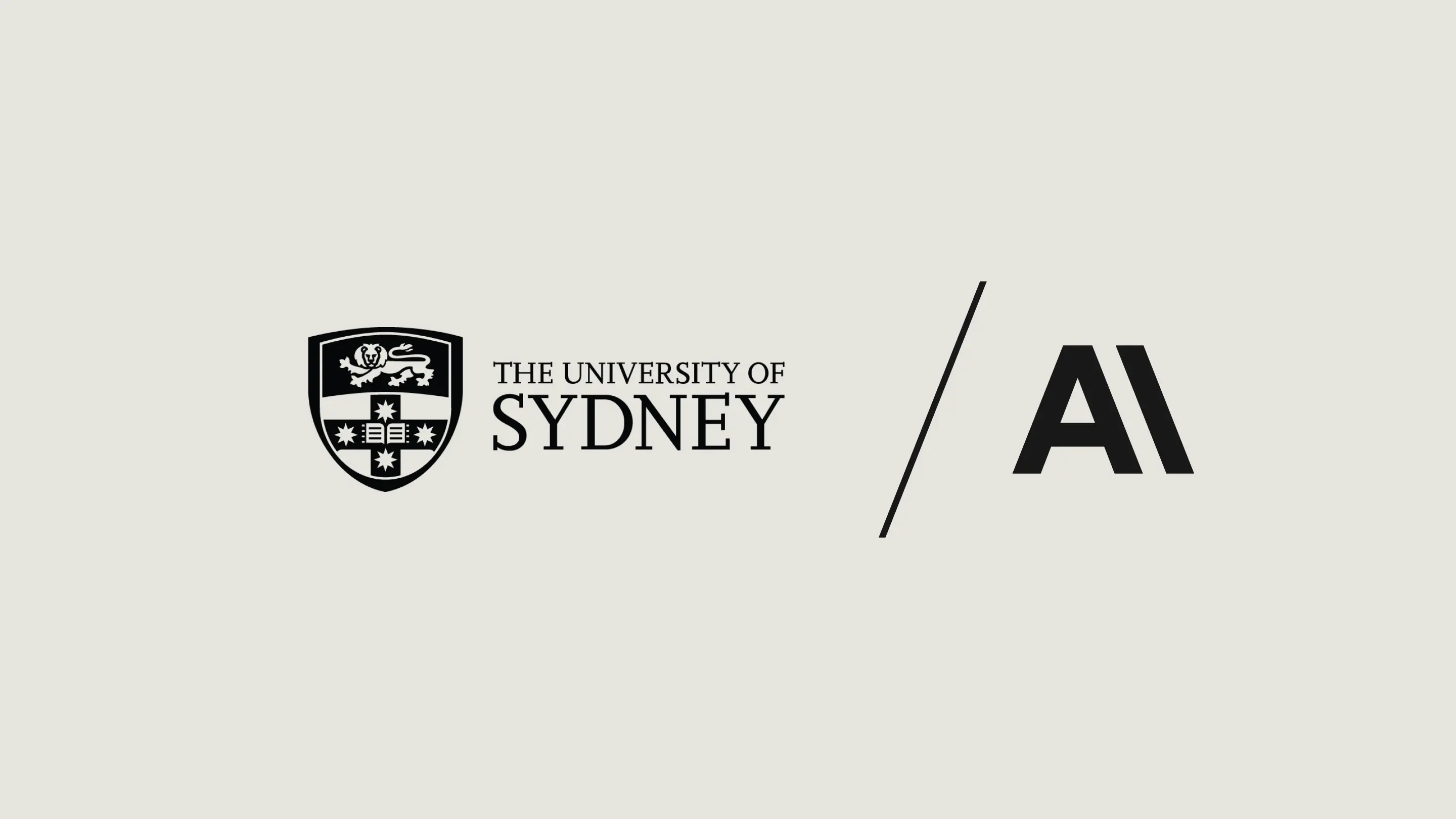The University of Sydney and Accenture accelerate whale conservation with Claude

Researchers at the University of Sydney use Claude to analyze vast acoustic datasets in real time for whale conservation through their partnership with Accenture, increasing detection accuracy while transforming a two-week manual process into instant insights.
With Claude, the research team achieved:
- 89.4% accuracy in detecting minke whales, compared to 76.5% with traditional methods
- Real-time analysis of data that previously took two weeks to process manually
- Coverage of thousands of kilometers of North American coastline
- Analysis of hundreds of thousands of acoustic recordings annually
Meeting the urgent need for scalable marine conservation
Marine conservation is shifting toward non-invasive monitoring methods, moving away from traditional approaches like trapping and tagging whales. This transition has led to a vast network of underwater microphones (hydrophones) deployed across coastlines. While this approach is better for the whales, it has created a new challenge: processing an overwhelming amount of acoustic data. "Traditionally, each recording is manually processed, which is time-consuming and labor-intensive, resulting in a significant portion of unused data," said Oscar Mower, researcher at the University of Sydney.
The stakes are particularly high given recent developments in commercial whaling. With many countries—including Japan—investing in new whaling vessels, the need for accurate population monitoring has never been more critical. Traditional analysis methods and basic detection tools like the band limited energy detector, with its 76.5% accuracy rate, cannot keep pace with the volume of data being collected.
Selecting Claude for superior accuracy and efficiency
After evaluating multiple AI models, the research team selected Claude Opus for three key advantages. First, Claude demonstrated exceptional reasoning and computer vision capabilities when analyzing spectrograms—the visual patterns created from whale sounds. During preliminary testing, Claude successfully analyzed hundreds of spectrograms, establishing a strong baseline for measuring improvements.
Second, Claude's foundation models were valuable given the unique challenges of marine species data. Through transfer learning, Claude required significantly less training data to become proficient at identifying minke whale vocalizations. "This capability was crucial since labeled acoustic data for marine species is extremely limited," said Mower. The ability to achieve high accuracy with smaller training datasets made Claude the ideal choice for marine conservation work.
How Claude transforms marine acoustic analysis
The team created a dual AI system that combines two types of artificial intelligence. Data is initially transformed from raw underwater sound recordings into visual charts called spectrograms. These spectrograms are like sound fingerprints that show the unique patterns of whale calls. Claude then uses its advanced visual recognition capabilities, in parallel with a specialised AI network called a CNN (Convolutional Neural Network) to analyse these spectrograms and identify whale activity with unprecedented accuracy . This approach enabled four key breakthroughs in whale conservation:
- Real-time monitoring of whale populations across vast ocean areas, replacing manual processes that took weeks
- Precise mapping of migration patterns and critical habitats, informing protected area decisions
- Detailed assessment of how human activities like shipping and drilling affect whale behavior
- Standardized data sharing between international conservation groups, enabling coordinated protection efforts
Driving measurable conservation impact
Claude's integration has transformed how researchers protect whales by enabling immediate, data-driven actions. Mower said, "By leveraging CNN models and AI AWS models, we can detect minke whales within a five-kilometer radius of a hydrophone with up to 89.4% accuracy." This real-time detection replaces analysis that previously took weeks, allowing conservation teams to act when and where it matters most.
The real-world impact is significant. Conservation teams can use accurate, up-to-the-minute whale location data to:
- Create protected zones along major migration routes and breeding grounds
- Redirect shipping traffic away from areas where whales are present
- Pause or modify drilling operations when whales are detected nearby
- Adjust fishing zones and enforce stricter regulations to prevent gear entanglement
These interventions address several of the main threats to whale populations. The solution provides practical tools for keeping whales safe by reducing ocean noise from industrial activities and preventing vessel strikes, which claim the lives of thousands of whales annually.
The partnership between Accenture and the University of Sydney made this breakthrough possible. Accenture provided the computing power—specialized processors and cloud resources—while the University of Sydney brought deep marine biology expertise. Together, they've created a system that's already saving whale lives.
Expanding the future of AI-powered conservation
The team sees their success with minke whales as just the beginning. They're working to expand their solution through multiclass classification and transfer learning, aiming to protect a broader range of marine species. Luke Higgins, Managing Director from Accenture, said, "This solution could scale to other marine species, impacting global conservation efforts."
As human activity in oceans increases and climate change threatens marine ecosystems, the research team views their partnership with Claude as essential to developing sustainable, long-term conservation strategies. Their vision extends beyond individual species to creating a comprehensive system for protecting marine ecosystems through AI-powered insights, setting new standards for conservation.